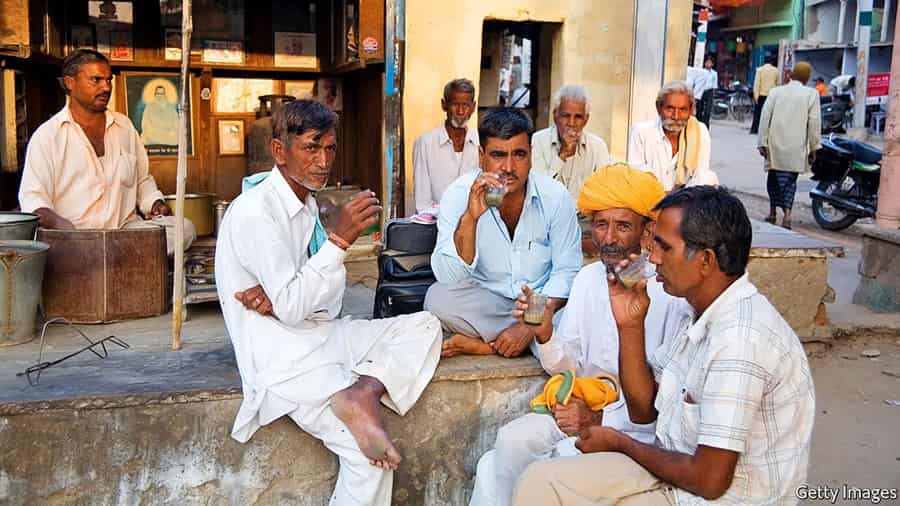Last Updated on 15/01/2025
Apart from China, India produces and consumes more tea than any other country in the world. Some of the most famous teas from India include Assam and Darjeeling. In fact, tea has been officially declared the “State Drink” of Assam. The people of India love tea so much that a staggering 70% of the tea produced in the country is consumed within India itself.

Historical Significance and Ayurvedic Connection
Tea in India has a long history, dating back to 750-500 BC, when the consumption of tea was first clearly documented. Tea also has associations with traditional systems of medicine, including Ayurveda, which has a long-standing tradition of herbal teas. As we all know, Indians love herbs and spices and the health benefits they offer, such as cardamom, pepper, liquorice, and mint. Tea is often mixed with these traditional herbs to provide all the benefits in one steaming cup.
The Popularity and Nature of Chai
Chai has become synonymous with Indian beverages. This variety is sweet and milky, helping to disguise the sometimes bitter taste of the medicinal additives, while flavours from ginger add a pleasant tang and aroma, along with many health benefits. The milk in chai tea is almost always whole milk, and it is usually sweetened with unrefined, local cane sugar called jaggery.
Chai in Daily Life and Culture
In India, chai is made both at home and outside. Most commonly, it can be found at the many ubiquitous tea stalls dotted around almost every street in the country. It is particularly popular in major cities such as Delhi, where ‘chai wallahs’ serve the thirsty public with this delicious drink. Chai is also used in virtually every household as a welcome drink for guests. In areas like Delhi, an average of four cups of chai are consumed per customer per day. The most popular time for chai is around 4 pm, when locals gather with a savoury snack, such as a samosa or pakora.
Chai’s Popularity in the West
In recent times, chai has spread to the West. In the US, for example, the name ‘masala chai’ has been shortened to ‘chai,’ or sometimes even ‘chai tea.’ This term is incorrect, however, as ‘chai tea’ would essentially mean ‘tea tea’! While some cafes fail to do the tea justice, producing poor imitations made with syrup concentrates (particularly popular in coffeehouses), many tea houses in the UK and US have started offering high-quality, loose-leaf masala chai, as the demand for premium tea rises. However, the spice blend is very rarely made from scratch and is often sourced from pre-made blends of dried spices.
Where to Enjoy Authentic Chai
If you want to sample an authentic cup of chai as it should be, why not visit one of London’s top Indian brasseries? Here, chai is lovingly prepared from scratch using an authentic Indian recipe and is served alongside homemade snacks. You could even treat yourself to a thali and wash it down with a delicious cup of steaming hot chai. It could become your very own 4 o’clock treat.


 Call
Call WhatsApp
WhatsApp Enquiry
Enquiry